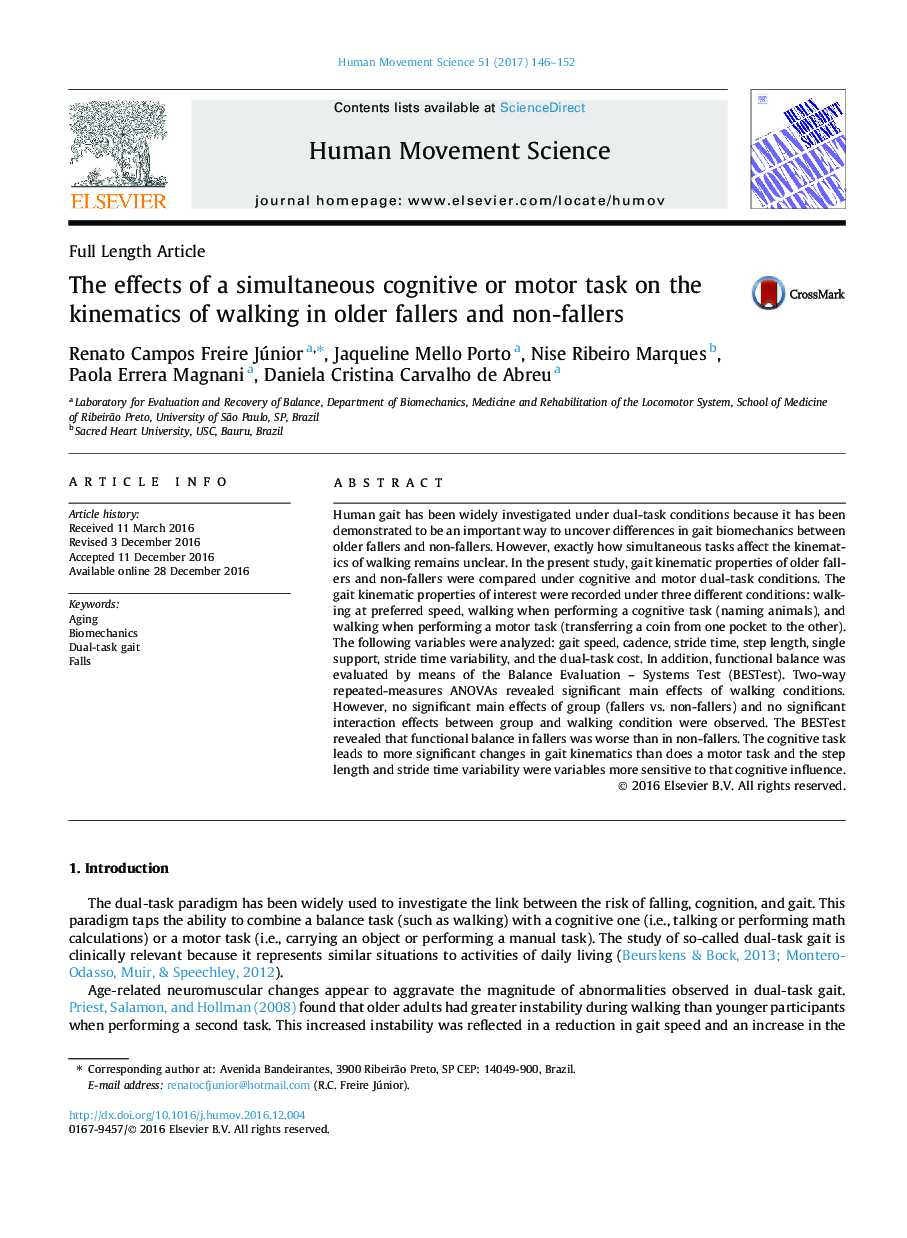| Article ID | Journal | Published Year | Pages | File Type |
|---|---|---|---|---|
| 5042030 | Human Movement Science | 2017 | 7 Pages |
â¢Discussion about changes gait kinematics in older faller during dual-task gait.â¢Older fallers and non-fallers had similar abnormalities on gait during dual task gait.â¢Cognitive dual task gait challenges more older adults than motor dual task gait.
Human gait has been widely investigated under dual-task conditions because it has been demonstrated to be an important way to uncover differences in gait biomechanics between older fallers and non-fallers. However, exactly how simultaneous tasks affect the kinematics of walking remains unclear. In the present study, gait kinematic properties of older fallers and non-fallers were compared under cognitive and motor dual-task conditions. The gait kinematic properties of interest were recorded under three different conditions: walking at preferred speed, walking when performing a cognitive task (naming animals), and walking when performing a motor task (transferring a coin from one pocket to the other). The following variables were analyzed: gait speed, cadence, stride time, step length, single support, stride time variability, and the dual-task cost. In addition, functional balance was evaluated by means of the Balance Evaluation - Systems Test (BESTest). Two-way repeated-measures ANOVAs revealed significant main effects of walking conditions. However, no significant main effects of group (fallers vs. non-fallers) and no significant interaction effects between group and walking condition were observed. The BESTest revealed that functional balance in fallers was worse than in non-fallers. The cognitive task leads to more significant changes in gait kinematics than does a motor task and the step length and stride time variability were variables more sensitive to that cognitive influence.
